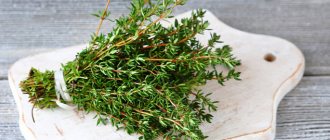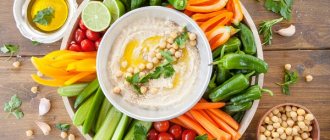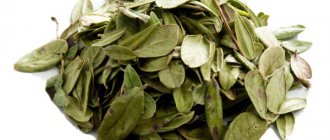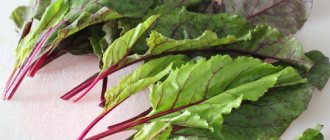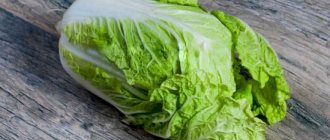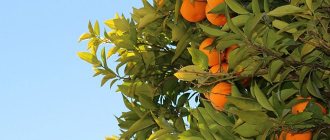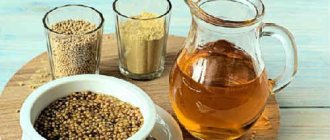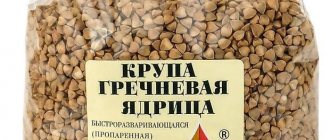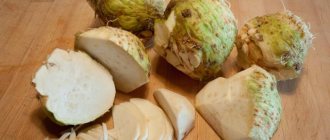Properties of nettle
Nutritional value and composition | Vitamins | Minerals
How much does nettle cost (average price for 1 bunch)?
Moscow and Moscow region.
12 rub.
Although this green plant is distinguished by its obstinate character, it carries great value for humans. Nettle has been used since ancient times not only for medicinal purposes (in cosmetology and medicine), but also for culinary purposes. Chefs have learned to prepare from the greens of this rather specific plant not only aromatic and very tasty first courses, such as soups, cabbage soup and borscht, but also use nettles as a delicate filling for pies and other types of baked goods.
In addition, salads and sauces are often prepared from it, which, thanks to the bright color of nettle leaves, acquire the rich color of fresh greens. For culinary purposes, it is used not only fresh or dried, but also, interestingly, pickled. By the way, young inflorescences of this plant are often brewed and consumed as tea, which has a beneficial effect on the body due to the considerable number of beneficial properties of nettle.
Application
Young nettles are added to soups, pickles and borscht. Vitamin salads are prepared from fresh nettles. To reduce the pungency of the plant, you need to pour boiling water over it.
Nettle also has side effects: it increases blood pressure and greatly thickens the blood, so it is not recommended to use nettle for varicose veins and thrombophlewitis. Contraindicated for pregnant women, as it increases the tone of the uterus and can cause premature birth.
Market Analytics
- COVID-19 is changing the rules of the game in the cosmetics market
- Beauty of the future: cosmetic innovations 2020
- New ingredients are the driving force of the cosmetics industry
Convenient search for beauty salons on our website
Beauty salons in Moscow Beauty salons in St. Petersburg Beauty salons in Ekaterinburg Beauty salons in Novosibirsk
Latest blog posts on our website
- Naturecream / Geranium (Pelargonium) oil for skin health and beauty
- Prostye-sovety / Save on a beauty salon: procedures that can be done at home
- Naturecream / Growth Factor - brings back youth?
- Oksana-Lezina / 3 effective abdominal exercises from a fitness instructor for beginners
- Prostye-sovety / Making perfect curls at home
- Prostye-sovety / Which hair removal method to choose
- Naturecream / Wrinkles Puppets
- Naturecream / PEPHA-TIGHT - instant skin lifting
- Naturecream / Blue light - a danger to the skin
- Naturecream / Cocoa Butter – A treat for the skin
Latest forum topics on our website
- Mrs._Smith / Badly sunburned! What to do?((
- Ice / Is it necessary to combine fitness classes with a diet?
- Antonova / What can be used for hair loss?
- Radio operatorKat / Who was on a protein diet?
- Suzanna / Mesotherapy on the face
Other articles in this section
| Boiled broccoli Broccoli is one of the healthiest dietary foods. The birthplace of this vegetable crop is in Italy, so broccoli is often used in Mediterranean dishes. Like cauliflower, broccoli has a tree-like structure, as evidenced by its Latin name broccolo - “scion”. |
| Dry beans Throughout history, dried beans have been an everyday food for many peoples. Beans were first cultivated in South America, from where the plant came to Europe along with the colonizers. Due to its unpretentiousness and high nutritional value, beans quickly became widespread in Asia, Africa, and North and South America. |
| Spinach Thanks to its abundance of nutrients and vitamins, spinach is an indispensable ingredient in vegetarian cuisine and is excellent for dietary nutrition. It is believed that the birthplace of this green leafy plant is Persia, from where in the 7th century. spinach came to China. In Europe, they learned about spinach only in the 11th century, when the Moors brought it to Spain. For a time it was even called the “Spanish vegetable.” Spinach is easy to grow in temperate climates from March to October. |
| Stevia Stevia is a South American plant of the Asteraceae family. The Stevia Rebaudiana plant is also known as sweet leaf or sugar leaf. In Latin American countries, it has been used as a sweetener for hundreds of years, but on the European continent they learned about this plant only in the 19th century. |
| Parsley (root) Parsley root resembles carrots or parsnips in appearance, but is distinguished by its light beige color. Its flavor has been described as a cross between celery, carrots, leaf parsley and turnip. It is believed that parsley root was first used in cooking in Germany in the 16th century. Since then, due to its high nutritional value, parsley root has often been added to diets in Germany, Holland and Poland. |
| Endive Endive, or chicory, is a herbaceous plant grown in the Mediterranean region. Its green leaves resemble salad leaves, but more carved. The leaves closer to the core are sweeter and crispier, while the more mature upper leaves become bitter. A close relative of chicory. The plant is unpretentious and loves cool weather. |
| Squash caviar The homeland of the pumpkin family, to which the squash belongs, is located in Central America. Scientists find pumpkin seeds in caves dating back to 5500-7000 BC. e. Zucchini quickly spread across the South American continent and, along with maize (corn) and beans, became part of the daily diet of the local population. Together with Christopher Columbus at the end of the 15th century. the seeds of squash and other pumpkin came to Europe. |
| Turnips Turnips are a root vegetable of the cruciferous family. In European and Asian cuisine, the root vegetable itself, stems, and leaves are used. As a rule, turnip fruits are round in shape and can weigh up to 1 kg. Turnips have been known in the Middle East for more than 4 thousand years; they were highly valued by the Greeks and Romans for their nutritional value and sweet taste. Turnips occupied the main place in the diet of the European population until potatoes were brought to Europe. And in Russian cooking it remained the main vegetable until the twentieth century. There are many varieties of turnips, the most common being yellow and white turnips. |
| Plantain Plantain is a wild perennial plant. It is very unpretentious, grows in meadows, pastures, gardens, along roadsides - which is why it got its name. This is a low-growing plant with oval leaves collected in a rosette. There are more than 200 varieties of plantain around the world. All parts of the plant are edible. Plantain has been used in European medicine since the 15th-16th centuries. and was considered practically a panacea. It is even mentioned in the works of Shakespeare. |
| Onions Onions are often called the “king of vegetables” for their pungent taste. Everyone knows about its health benefits. If you eat a small amount of raw onions every day, you can prevent many diseases, especially colds. |
Benefits of nettle
The benefits of nettle are known as an anti-inflammatory, hemostatic and hypoglycemic agent. With its help, it is recommended to increase the tone of the uterine cavity, as well as the number of red blood cells in the blood and hemoglobin level. Therefore, nettle is often recommended for the treatment of bleeding, anemia, tuberculosis, kidney disease, liver disease, bladder disease and metabolic disorders.
Traditional medicine claims the benefits of nettle as an indispensable medicine, on the basis of which various drugs are made that have strengthening, wound-healing, laxative, diuretic, anticonvulsant and expectorant properties. Its regular consumption promotes the speedy healing of wounds and small ulcers, and it is recommended to make infusions, lotions and baths from crushed dried nettle leaves, which, when used regularly, prevent hair loss and promote rapid growth and healthy shine.
Interesting things about the products
Stinging nettle. Properties, application, recipes.
Author: Egorov I.V. Candidate of Biological Sciences Source: www.gorod21veka.ru
Useful properties of stinging nettle
Stinging nettle (U. urens L.) and stinging nettle (Urtica dioica L.) are unpretentious perennial plants that are found everywhere. Stinging nettle is an annual plant, its stem is shorter (up to 70 cm), the leaves are more rounded, the staminate and pistillate flowers are collected in one inflorescence. The leaves of stinging nettle and stinging nettle are similar in the content of biologically active substances, so they can be collected together for medicinal use and cooking. It differs from dioecious in that it is smaller in size. But its action at the moment of contact is similar.
Stinging nettle - Urtica dioica L. Nettle family - Urticaceae Perennial herbaceous plant 40-150 cm high. The stem is straight, simple, covered with stinging hairs. The leaves are opposite, long-petiolate, lanceolate or ovate-lanceolate. Heart-shaped at the base, coarsely toothed at the edges. The flowers are green, small, collected in spike-shaped inflorescences, which are located in the upper axils of the leaves. The fruit is a single-seeded dry nut. Blooms from June to September.
The name “nettle”, which is familiar to us, is translated into Latin as Urtica Dioica, which literally means “burning”; it is clear why nettle was called that way. The word “nettle” came to us from the Old Russian meaning of the word “silk”, or coprina. Nettle was an excellent raw material for the production of various fabrics. For many years, nettles were cultivated in fields and in greenhouses specifically for the light industry of that time.
Nettle has been known as a medicinal plant for a long time. Avicenna in the “Canon of Medical Science” says the following about it: “In a medicinal dressing with vinegar, it makes abscesses open, helps with them, and is beneficial for hardening... Crushed nettle leaves stop nosebleeds...”
It was the hemostatic effect of nettle that attracted the attention of doctors. From the 16th century Decoctions of the leaves of this plant have become widely used for pulmonary, intestinal and uterine bleeding. However, since the beginning of the 20th century. Nettle fell into the category of forgotten medicinal plants.
During the Great Patriotic War, when the need for hemostatic agents increased sharply, nettles were again remembered. Scientists have created a liquid extract from the leaves of stinging nettle, which has served well in hospitals and clinics.
Almost the entire plant, rhizomes, leaves, and seeds are used in medicine. For medicinal use, the leaves and tops of the plant are mainly used in May - August; roots - in the fall, after the growing season. Rhizomes contain tannins, nicotine, vitamin C; seeds - fatty oils (16-33%); flowers and seeds - vitamin C. Fresh leaves contain acids (formic, oxalic, succinic, pantothenic, gallic), glycoside urticin, gum, tannins and protein substances, mineral salts, iron, vitamin C (150-200 mg%), various carotenoids (up to 50 mg%), vitamins K and B2, protoporphyrin, coproporphyrin, sitosterol, histamine, essential oil, chlorophyll (2-5%), phytoncides.
Properties of nettle
We are accustomed to the fact that we get vitamins only from vegetables and fruits. Meanwhile, herbs, as a source of vitamins, are undeservedly forgotten. And the same nettle contains two times more carotene than carrots, sea buckthorn and sorrel, and more ascorbic acid than currants and lemon.
And just 20 nettle leaves will give the body a daily ration of vitamin A. And, of course, nettles contain iron, magnesium, copper, and calcium. So it would be a very good idea to add scalded nettle leaves to salads. Well, if we talk about its medicinal properties, then it will help restore the functioning of many organs.
Drying nettle leaves under vacuum and low temperature (lyophilic drying technology) makes it available for long-term storage. Lyophilization allows you to preserve all the properties of nettle for a period of 2-3 years. Leaves prepared using this method have increased efficiency, because vacuum drying makes all components of nettle more digestible - hence the higher effect.
What is nettle rich in, and why is it so necessary for people?
This is a valuable multivitamin plant, a kind of natural concentrate of vitamins. Almost all vitamins, many microelements, organic acids, as well as phytoncides and tannins are found in it, and fatty oil is found in the seeds. There is 2.5 times more ascorbic acid in this plant than in blackcurrant fruits and lemon.
The carotene content is higher than in sea buckthorn berries, carrots and sorrel, and only 20 nettle leaves provide our body with the daily requirement of vitamin A.
Results of chemical analysis of dry nettle leaves
| COMPOUND | % |
| Crude protein(s) | 35,3 |
| Carbohydrates | 23.8 (dry weight) |
| Moisture | 5,0 |
| Cellulose | 17,2 |
| Lignin | 10,7 |
| Pectins | 0,7 |
| Amino acids | % |
| Lysine | 1,08 |
| Histidine | 0,61 |
| Arginine | 1,05 |
| Aspartic acid | 1,62 |
| Threonine | 0,80 |
| Serin | 0,55 |
| Glutamic acid | 2,20 |
| Proline | 0,88 |
| Glycine | 0,97 |
| Alanin | 1,11 |
| Cystine | 0,32 |
| Valin | 1,06 |
| Methionine | 0,52 |
| Isoleucine | 0,82 |
| Leucine | 1,47 |
| Tyrosine | 0,57 |
| Phenylalanine | 0,92 |
| Mineral elements | mg/kg |
| potassium | 20387 |
| sodium | 3760 |
| calcium | 28665 |
| magnesium | 5260 |
| manganese | 131 |
| iron | 143 |
| zinc | 35 |
| copper | 11 |
| nickel | 0,8 |
| cobalt | 1,9 |
| selenium | 94 |
| Chromium, lead, cadmium, mercury, arsenic were not detected. | |
| Vitamins | mg/100g |
| Thiamine (vitamin B1) | 1,0 |
| Pantothenic acid (vitamin B3) | 0,993 |
| Folic acid | 0,167 |
| Biotin (vitamin H) | 0,0246 |
| Vitamin PP | 4,18 |
| Meso-inositol | 110,8 |
| Ascorbic acid (vitamin C) | 145,2 |
| Vitamin K | 2,63 |
| Beta carotene | 210 |
Such a rich set of amino acids, macro- and microelements, vitamins provides a wide range of restorative, health-improving and therapeutic-and-prophylactic effects of nettle on the human body. Nettle proteins contain 9 out of 10 essential amino acids, which, in combination with minerals and vitamins, allows you to maintain high performance and quickly restore strength after hard work, fatigue or illness.
Essential amino acids are not synthesized in the human body and must be obtained from food. This:
Lysine , which promotes the absorption of calcium and supports normal nitrogen metabolism necessary for the formation and growth of bones, as well as during recovery after operations and injuries;
Histidine , which protects the body from exposure to radiation, is necessary for the formation of red and white blood cells and the maintenance of immunity;
Arginine , necessary to maintain metabolism in muscle tissue, improves skin condition, is involved in the restoration of joint cartilage, strengthens ligaments and heart muscles, slows the growth of tumors and stimulates the immune system;
Threonine , which supports protein and fat metabolism and immunity;
Methionine , which normalizes liver function and prevents the deposition of fat in it, preventing muscle weakness and hair loss;
Phenylalanine , which improves memory and attention, improves blood circulation, promotes the formation of insulin.
Other amino acids contained in nettle are involved in the restoration of damaged tissues, skin formation, and strengthening of joints. The effect of glutamine, the percentage of which is the highest, is especially surprising. It improves brain activity, reduces cravings for alcohol and smoking, and maintains acid-base balance in the body.
Nettle is almost the only product that contains vitamin K - a hemostatic factor that increases blood clotting, especially during external and internal bleeding, and has an anti-inflammatory effect.
These properties are especially important for the gastrointestinal tract, where microdamage constantly occurs. The antitoxic effect of nettle is pronounced. At the same time, the lignins and cellulose polysaccharides contained in plant fibers are combined with vitamins C, K, E, group B, therefore, when nettle is consumed as food, toxins are absorbed throughout the entire gastrointestinal tract.
Nettle also contains formic acid, tannins, and flavonoids. The presence of bioflavonoids is an important factor in the antihistamine and antioxidant effects, which makes it possible to recommend nettle for the prevention and treatment of asthma. Nettle is rich in vitamin C, the content of which is not inferior to citrus fruits. In combination with the amino acid cystine, vitamin C affects the bronchi and mucus secreted by the pulmonary epithelium. Therefore, nettle should be consumed by anyone who has weak or diseased lungs.
Vitamin C and lipoproteins contained in nettles, being antioxidants, have a positive effect on the prevention of cardiovascular diseases. The normalization of the cardiovascular system is facilitated by the high content of potassium and calcium. Therefore, regular use of nettle is one of the factors in reducing the risk of heart and vascular diseases.
The high content of beta-carotene in nettles (2 times more than in carrots!) helps strengthen the retina and improve vision. Large quantities of chlorophyll, which has an anti-radiation effect, are extremely valuable when working in conditions of increased radiation and during irradiation; When applied topically, chlorophyll promotes wound healing. Therefore, nettle is a must for those who work with a computer. The unique combination of substances in nettle ensures its unsurpassed effect on the body.
Essentially, we can talk about the unique properties of this plant, which, unfortunately, is used very little in practice, since dry nettle is not always available in pharmacies, and it is very difficult for city residents to collect and prepare it for future use. In addition, you cannot collect nettles near highways, because it may be toxic due to the lead it contains.
People suffering from diabetes mellitus especially need to consume nettle. There is evidence that eating nettle helps restore the functions of beta cells of the pancreas, as a result of which in diabetic patients insulin dependence is sharply reduced until normal sugar metabolism is completely restored. In addition, the presence of secretin in nettle, which stimulates the formation of insulin, is also antidiabetic, helping to remove sugar from the blood.
It strengthens the immune system, has a general strengthening effect, and helps resist the effects of radiation. Nettle will also help those who suffer from metabolic disorders and diabetes, as it has a stimulating effect on protein and carbohydrate metabolism, and on the formation of insulin.
Nettle helps thanks to vitamin K and as a powerful hemostatic and wound healing agent, used both externally and internally.
And also - a diuretic, choleretic agent, increasing the tone of the intestines, uterus and cardiovascular system. Actually, it seems that this is an almost universal healer.
INDICATIONS FOR USE | |
| Nettle decoction that affects the condition of the whole body | A person becomes vigorous, healthy, the heart improves its function, the composition of the blood improves, movements become easier, sclerosis goes away: put 200 g of May nettle (leaves) in a bottle and pour in 0.5 liters of vodka or 50-60% alcohol. Tie the neck of the bottle with gauze. Keep it on the window for the first day, and the remaining 8 days in a closet in the dark. Strain and squeeze. Take: 1 teaspoon on an empty stomach 30 minutes before meals and 1 teaspoon at night before bed. Drink the whole bottle. |
| To maintain tone and strengthen strength, to prevent acute respiratory diseases and to saturate the body with strength and energy | All you need to do is buy young nettles and make juice from it. Take: at least 60 ml per day, which corresponds to 12 teaspoons. If desired, the juice can be sweetened with natural honey. |
| For anemia as a vitamin supplement and normalizes metabolism | 2 tbsp. Pour 1 cup of boiling water over spoons of nettle flowers, leaves or herbs, leave for 15 minutes, strain. Take : 1-2 glasses 3 times a day before meals. Nettle decoctions and infusions help increase the concentration of hemoglobin in the blood, as well as the number of red blood cells. |
| When blood clotting is weakened | 2 tbsp. Brew spoons of leaves with 1 cup of boiling water, boil for 10 minutes over low heat, cool and strain. Take: 1 tbsp. spoon 4-5 times a day. |
| For bleeding | 1 tbsp. Brew a spoonful of nettle leaves with 1 cup of boiling water, boil for 10 minutes over low heat, cool and strain. Take: 1 tbsp. spoon 4-5 times a day. Or 2 tbsp. Brew tablespoons of dried nettle leaves with 2 cups of boiling water, leave for 1 hour and strain. Take 1/2 cup 2 times a day |
| For compresses and rinses | 2 tbsp. Pour 1 cup of boiling water over spoons of the whole plant, leave for 25 minutes, strain. During the period of scarring, rinse the fistula tracts with juice from fresh leaves. |
| From wounds and cuts | Fill the bottle with fresh nettle leaves, add alcohol and close with a stopper. Place in the sun for two weeks. Gauze soaked in the tincture and applied to a wound or cut will speed up healing and protect against infection |
| Mouth rinse | infusion of leaves 1:10 - 10 g of nettle leaves, brew 1/2 cup boiling water, leave for 10 minutes, strain, cool |
| For acute articular rheumatism, muscular rheumatism, gout | Nettle decoction 1 tbsp. Pour 1 cup of boiling water over a spoonful of dry leaves, leave, covered, for 1 hour, strain. Take 1 tbsp. spoon 3-4 times a day 30 minutes before meals |
| For chronic cough, nettle roots | finely chop and boil well in sugar syrup. Take: 1 tbsp. spoon several times a day. Or pour a pinch of nettle flowers into 2 cups of boiling water, leave, covered, for 1 hour, strain. Drink like tea |
| Like a good pain reliever | For severe pain, use a decoction: nettle leaves - 1 part, buckthorn (bark) - 1 part, 8 g of the mixture, pour 1 liter of boiling water, heat for 10 minutes over low heat, leave, wrapped, 30 minutes, strain. Take: 1 glass 4 times a day |
| For inflammatory diseases of the liver, gall bladder, various parts of the gastrointestinal tract | in the form of infusions 1:10. Sometimes freshly prepared juice is used |
| To improve kidney | Nettle decoction is taken with honey or sugar. For such a decoction, one teaspoon of dried nettle leaves per glass of water is enough. For nephritis and pyelonephritis, the dose is increased to 1-2 tablespoons, kept in a water bath for 15 minutes. Take: a third or half a glass before meals |
| Nettle decoction for acute gastritis | a) nettle leaf, plantain leaf, St. John's wort herb, chamomile flowers (equal shares of all). 4 tbsp. spoons of the mixture, pour 1 liter of boiling water, leave for 2 hours in a warm place. Drink 1 glass up to 1.5 liters per day for 7-10 days; b) nettle leaf, St. John's wort herb, knotweed herb, peppermint leaf (equal shares of all). 4 tbsp. Brew 1 tablespoon of the mixture with 1 liter of boiling water, leave for 2 hours in a warm place. Drink from 0.2 to 1.5 liters per day for 7-10 days. For gastritis and ulcers, take 1 tsp. 3-4 times a day for 30 minutes. before meals, diluted in 1/2 glass of water. |
| For habitual constipation | Collection: nettle leaves - 1 part, yarrow flowers - 1 part, buckthorn bark - 3 parts. 1 tbsp. Brew a spoonful of the mixture with 1 cup of boiling water, boil for 1 minute, leave for 30 minutes, strain. Take: 1/2 - 1 glass at night. Course of treatment - 2 weeks |
| For frequent diarrhea | eat dry, powdered nettle or drink an infusion of nettle leaves and blackberries. Crushed raw leaves are recommended to be applied to fresh wounds. Nettle juice is used to treat old wounds, ulcers and fistulas. |
| For hemorrhoids | nettle leaves - 1 part, oregano herb - 2 parts, buckthorn bark - 2 parts. 1 tbsp. Brew a spoonful of the mixture with 1.5 cups of hot water, boil for 5 minutes, leave for 4 hours in a warm place. Take: warm, 1/2 cup 3 times a day 15 minutes before meals |
| In case of excessive menstruation and various bleeding | Take the juice of fresh nettle leaves orally, 1 teaspoon 3 times a day in 1/4 cup 20 minutes before meals. Liquid nettle extract (pharmaceutical preparation) Take: 30-40 drops 30 minutes before meals in 1/4 glass of water to prevent uterine bleeding |
| For cervical erosion | insert a cotton swab moistened with juice from fresh nettle leaves, or a paste of leaves on a swab into the vagina |
| To increase lactation | nettle leaves - 1 part, dill fruits - 1 part, sweet clover herb - 1 part, anise fruits - 1 part. 2 tbsp. Pour 2 tablespoons of the mixture with 2 cups of water, bring to a boil, cool, strain. Take: 1/2 cup 2 times a day 1 hour after meals |
| To lubricate affected areas of the skin | Nettle is used in the form of an ointment, which is prepared from dried and powdered nettle leaves, annual pepper grass and petroleum jelly. Apply the ointment 2 times a day. a) nettle leaf - 2 parts, dandelion root - 1 part; b) nettle leaf - 2 parts, dill seed - 1 part, anise seed - 1 part. 2 tbsp. spoons of the mixture, brew 0.5 liters of boiling water, leave for 2 hours, drink in sips throughout the day |
| For nosebleeds | use dried and crushed leaves, and use fresh leaves to destroy warts |
| Nettle juice - for acne wounds and ulcers | fresh leaf juice has early and ulcer-healing properties. You can squeeze it out using a meat grinder or juicer (the leaves are washed before doing this). For acne, take nettle infusion orally at the same time. |
| Heal diaper rash, acne and skin wounds | tampons soaked in juice help (apply and stick with a band-aid, change 2-3 times a day until healing) |
| Nettle decoction for baldness | for seborrhea and focal baldness, boil 100 g of leaves for 30 minutes. in 1 liter of vinegar diluted with water 1:1. Wash your hair in the evening before bed, without shampoo, every other day, course for 3-4 weeks, then break for 1-2 weeks, and repeat the course again |
| Decoction for hair loss and dandruff | nettle leaves - 20 g, coltsfoot leaves - 30 g, calamus rhizomes - 30 g. 6 tbsp. Boil a spoonful of the mixture for 10 minutes in 1 liter of water, wrap it warmly for 1 hour, cool, strain. Wash your hair with a decoction 3 times a week for dandruff and hair loss. Wash your hair with nettle decoction before bed without soap. For the decoction: 100 g of crushed nettle leaves, pour 0.5 liters of tbsp. vinegar and 0.5 liters of water and cook for 30 minutes, when cool, squeeze |
Medicinal properties of NETTLE SEEDS | |
| Recipe for saving male power | Caucasian centenarians, for whom late marriage and procreation in old age are not a problem, often use a tincture of nettle seeds. To enhance potency, the recipe uses not vodka, but real grape wine. Pour 5 tablespoons of seeds into 0.5 liters of grape port, boil for 5 minutes, cool and strain. Take: 50 ml before bed or 1 tbsp 3-4 times a day. You can also use a decoction of nettle seeds |
Nettle is one of the few plants in whose leaves green chlorophyll is almost not accompanied by other pigments: carotenoids, anthocyanins, etc. Therefore, nettle leaves serve as a convenient object for obtaining pure chlorophyll, which is used in the food industry as a harmless dye.
Nettle was used to make a very durable fabric, which in the tenth century was used to make sails, ropes, and fishing gear.
In many countries, nettles are grown specifically. In France it is grown as animal feed. It is an unpretentious plant and can be harvested frequently.
It is especially often fed to pregnant animals and young animals. Cows receiving nettles produce more milk and better quality. Chickens' egg production increases.
A nettle broom in a bathhouse is very useful, especially for osteochondrosis.
In folk medicine, a decoction of the rhizomes and roots of stinging nettle is used internally for furunculosis, hemorrhoids and swelling of the legs, and an infusion of the roots is used as a heart remedy.
Sugared nettle rhizomes are also used for coughs.
An infusion of stinging nettle flowers in the form of tea is drunk for choking and coughing for expectoration and resorption of phlegm.
Uses of nettle leaf powder
. 2 tbsp. spoons of powder are mixed in a glass of curdled milk, yogurt or kefir and consumed once a day.
0.5 g of nettle leaves crushed into powder is taken 3 times a day for the same diseases as the infusion. The powder is sprinkled on wounds and used externally for nosebleeds.
Fresh nettle leaves
applied to purulent wounds to cleanse and heal them and used to remove warts. Nettle leaves mixed with honey help with shortness of breath
Fresh nettle juice
take 1 tbsp. l. 3 times a day for the same diseases as the infusion.
Syrup from nettle juice and honey
with tea is recommended for anemia, bleeding, diabetes, cough and decreased potency.
A simple kidney cleansing recipe
: swallow 3 g of nettle seeds once a day.
If you mix nettles with salt
, knead this mixture and apply it to dense tumors, then this paste will slowly dissolve any formations and cleanse purulent ulcers.
Candied nettle rhizomes
They are used for coughs, and the seeds are used for kidney stones, dysentery and as an anthelmintic.
Raw leaves are fermented like cabbage
.
Delicate nettle inflorescences
brewed as tea.
Potency can be increased
and with the help of this medicine: take one glass of red grape wine and a tablespoon of dry nettle. Mix all this, boil in a water bath for 30 minutes, strain the broth and take a tablespoon 3-4 times a day.
Nettle is absolutely indispensable in modern cosmetology for the skin of the face, head, hands and feet.
Bath. Nettle along with roots and rhizomes are crushed and poured with boiling water in a ratio of 1:20, leave for half an hour, strain. A bath at 36-37 °C can be taken at any convenient time.
Nettle lotion is an ideal remedy for oily skin. How to make it? Extract the juice from fresh nettles, take one tablespoon of this juice and mix
it with one hundred milliliters of alcohol or vodka. Wipe your face with this lotion morning and evening for two to three months. You will see that your skin will become matte, fresh and healthy looking.
To tone the skin of your hands, it is recommended to take nettle baths. We take one tablespoon of nettle per liter of water and make an infusion in which we keep our hands for no more than a quarter of an hour. After the bath, hands should be thoroughly dried and soaked in cream.
Nettle masks are very popular , which are especially useful for dehydrated or lacking skin tone. We start making a mask with 1 tablespoon of milk. The milk should not be cold: it is better to warm it up and let it cool to room temperature. Add the required amount of milk to one tablespoon of nettle. It is desirable that it be dry nettle, which is easy to chop. Leave the milk with nettles for ten minutes, and then add a spoonful of yolk. Mix and you can apply to your face. You need to wash off the mask after a third of an hour, preferably with boiled water (not hot). If you have oily skin, use white instead of egg yolk.
If your hair falls out , it should be strengthened with the following infusion. Take two large spoons of dry nettle and two large spoons of coltsfoot, brew this mixture with 200 ml of boiled water, leave this infusion for some time and then squeeze out. This infusion must be rubbed into the scalp, especially into the hair roots once every three days.
For increased sebum secretion, dandruff, hair loss after washing your hair and drying your hair, rub an infusion of nettle leaves into the scalp: 1 tbsp. Brew a spoonful of leaves with 1 cup of boiling water, leave for 1.5 hours and strain. Use once a week for a long time.
Infusions and decoctions
Herbal decoction | |
| 1 tbsp. l. dry crushed leaves and roots of nettle in 300 ml of water, boil for 10 minutes over low heat, leave for 1 hour, filter. Take 1 tbsp. l. 3-4 times a day for the same diseases as the infusion, | It is recommended mainly for bleeding, acute joint and muscle rheumatism, gout, hemorrhoids, furunculosis, swelling of the extremities |
| Boil 100 g of dried nettle leaves per 1 liter of water for 10 minutes, leave for 1 hour, filter. Take 200 ml 4-5 times a day as a hemostatic, wound healing and multivitamin remedy | for washing, rubbing, compresses, lotions for various skin diseases, as well as for hair growth and strengthening (they wash their hair with the decoction every other week for several months) |
| Boil 300 g of nettle roots in 3 liters of water for 20 minutes over low heat, leave for 2 hours. Used as warm baths | for rheumatism, gout, joint pain (the decoction can be used repeatedly), and for tumors, add 100 g of leaves to the decoction. |
Herbal infusion | |
| 1 tbsp. l. dry nettle leaves in 250 ml of boiling water, infuse for 1 hour, filter. Accept: 1 tbsp. l. 3-4 times a day 30 minutes before meals as tonic, multivitamin |
|
| 1/2 tsp. dried nettle flowers in 250 ml of boiling water, infuse for 20 minutes. Taken as tea |
|
Herbal tincture | |
| 600 g of fresh nettle leaves per 500 ml of 96% alcohol are infused for 10 days, filtered. Take 3-10 drops 3 times a day | for the above diseases |
For medicinal purposes, the nettle infusion should be filtered no later than after an hour.
Procurement of raw materials
To prepare medicines, the roots of the plant and leaves of stinging nettle are used. The leaves are collected when the nettle is in bloom, then dried in ventilated rooms or in the open air. The raw material, ready for storage, is dark green in color, tastes bitter and has a faint odor. The shelf life of the leaves is 24 months. The roots are stored in late autumn. Procurement of raw materials, as it turns out, is almost the most important moment in the entire process. The leaves are collected by separating them from the stem. To prepare for future use, dry the leaves in the shade the same day. When the central vein of the leaf becomes brittle, the raw material is ready. Tightly closed jars and plastic bags are not suitable, since storage in them impairs the quality and healing properties of plants.
Side effects and contraindications
Nettle has the property of enhancing uterine contractions in women, so it should not be taken during pregnancy, especially during the last trimester.
It is not recommended to use nettle for medicinal purposes and in case of edema and stagnation of fluids in acute heart and kidney failure.
It is not recommended for use by people with possible thrombosis, increased blood clotting, as well as with hypertension and atherosclerosis. For those who have heart problems, as well as atherosclerosis, when blood vessels narrow.
It should not be used for uterine bleeding caused by tumor diseases. When conducting a course of cleansing the body of poisons
Nettle propagation
We speak out in defense of such a useful “weed” again and again. After all, by destroying nettle shoots, we deprive ourselves of the richest source of vitamins. Nettle can be grown on site, which is done easily by sowing seeds or shoots from the root. It is necessary to sow in September thicker than other seeds. If you propagate it by roots, then in September or October, depending on the weather, you need to dig up the stems, separate them, plant them in a certain place, cutting off the old stem, two fingers above the root. The nettles should be neither too tall nor too old. It is necessary to plant tightly and trample down the soil so that the stems cannot grow at random. Thus, nettles planted in September or October can be cut back next spring.
A field, once sown or planted with nettles, does not need to be sowed another time, because the nettles will grow from roots that no weather can harm. Moreover, nettle can grow in the most unsuitable places; it does not require plowing,
Nettle recipes
Nettle is a valuable food product. Tasty and nutritious cabbage soup is cooked from young shoots and leaves, and salads are prepared from the leaves. The tops of shoots with leaves are suitable for making cabbage soup and puree until late autumn. Nettle leaves are included in various teas. You don’t need to store boiled nettle for a long time, it quickly loses its vitamins. The best thing is to take nettle as food on the day of collection. In addition, nettle leaves and shoots can be pickled and used, as they do, for example, in the Caucasus, as a seasoning for meat dishes.
Culinary use, recipes:
Nettle sandwich
Chopped nettle - 4 tbsp. bunch of dill cottage cheese-80g. fused
| Subscription to the mailing list of announcements of new portal articles |
See also:
How to choose a ripe watermelon, its beneficial properties and recipes
Stinging nettle. Properties, application, recipes.
Avocado
Pumpkin is a healthy berry for everyone
Chia seeds - beneficial properties and recipes
About the benefits of apples
- 1
